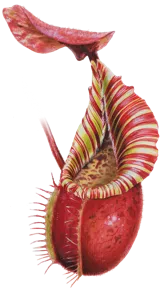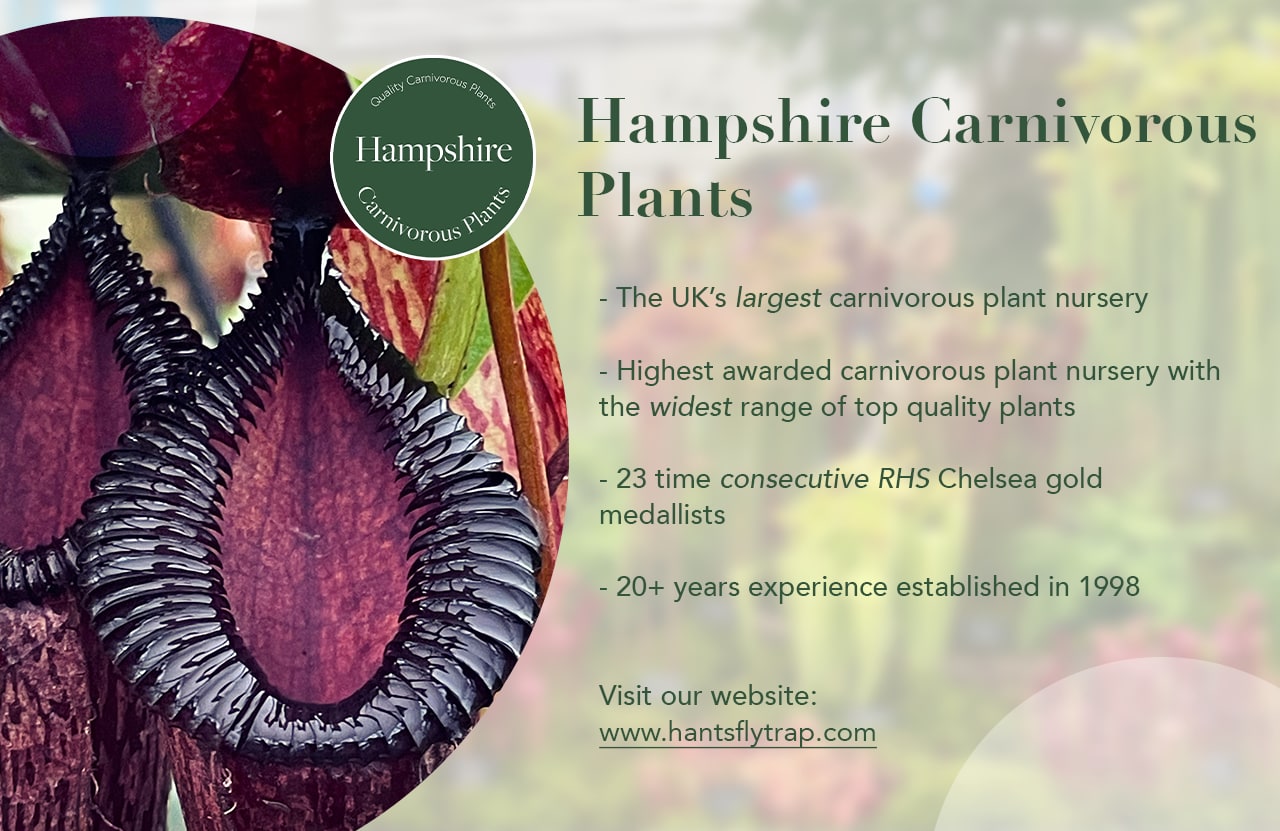Nepenthes macrophylla
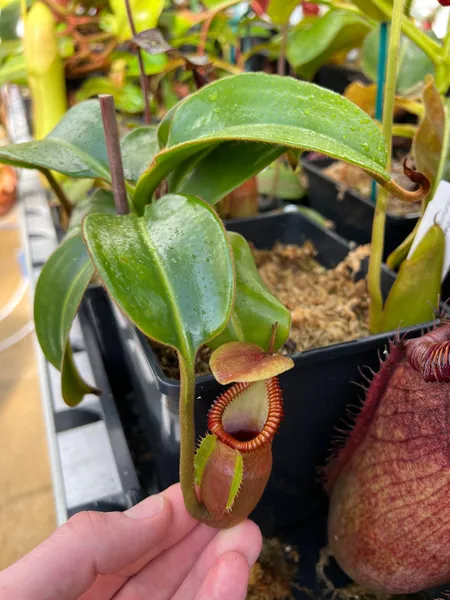 A smaller pitcher on my AW plant, produced when daylight was dim.
A smaller pitcher on my AW plant, produced when daylight was dim. 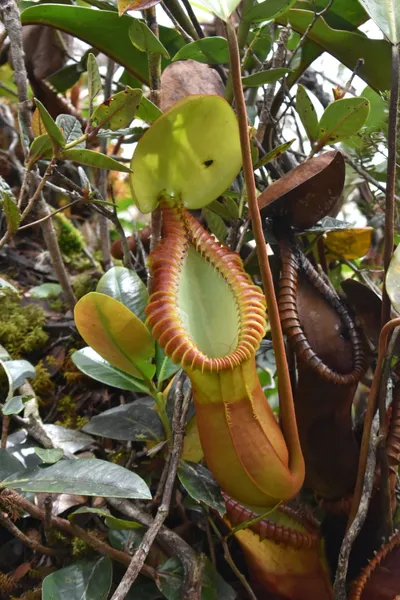 Another N. macrophylla on Mt Trusmadi, photographed by James Klech
Another N. macrophylla on Mt Trusmadi, photographed by James Klech .%20I%20suspect%20this%20is%20his%20Clone%20T_%20but%20I'm%20not%20certain.%20Lovely%20thick_%20glossy%20leaves%20on%20this%20plant..B9ufif3A_Z2nNAkU.webp) My N. macrophylla from Wistuba (AW). I suspect this is his Clone T, but I'm not certain. Lovely thick, glossy leaves on this plant.
My N. macrophylla from Wistuba (AW). I suspect this is his Clone T, but I'm not certain. Lovely thick, glossy leaves on this plant. 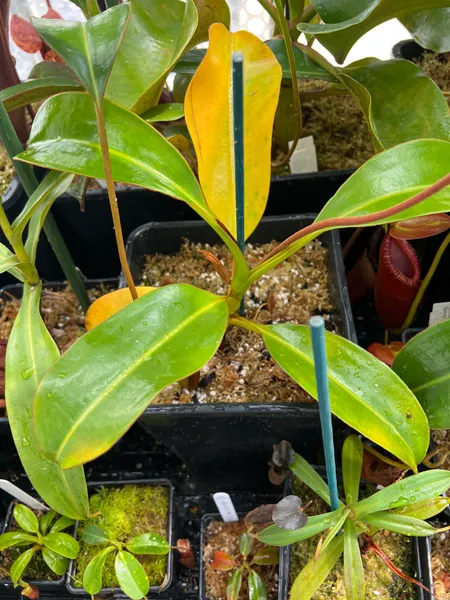 My seed-grown Nepenthes macrophylla, the most vigorous specimen of this species in my collection.
My seed-grown Nepenthes macrophylla, the most vigorous specimen of this species in my collection. 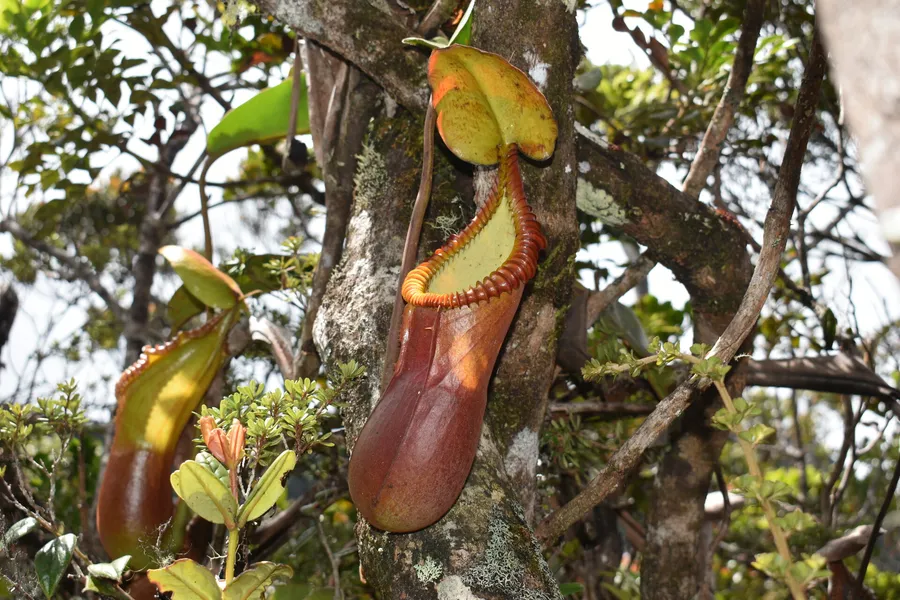 N. macrophylla on Mt Trusmadi, photographed by James Klech
N. macrophylla on Mt Trusmadi, photographed by James Klech 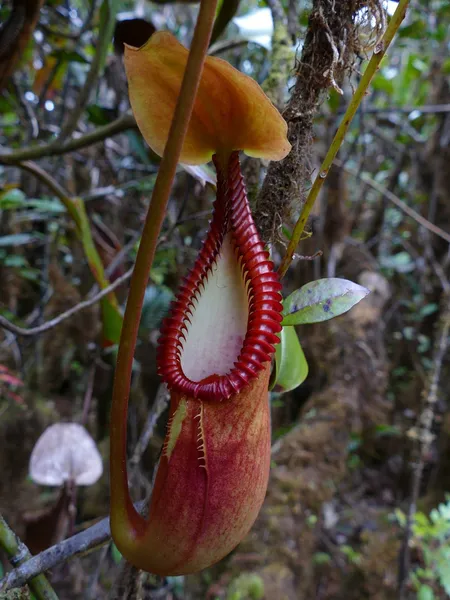 Nepenthes macrophylla photographed in-situ by my fellow CP blogger François Mey.
Nepenthes macrophylla photographed in-situ by my fellow CP blogger François Mey. 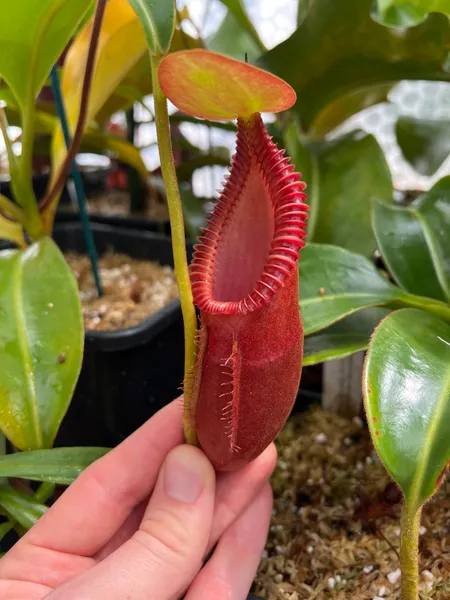 This plant isn't yet mature, but already the pitchers and leaves are showing some of the wonderful characteristics of this species.
This plant isn't yet mature, but already the pitchers and leaves are showing some of the wonderful characteristics of this species. 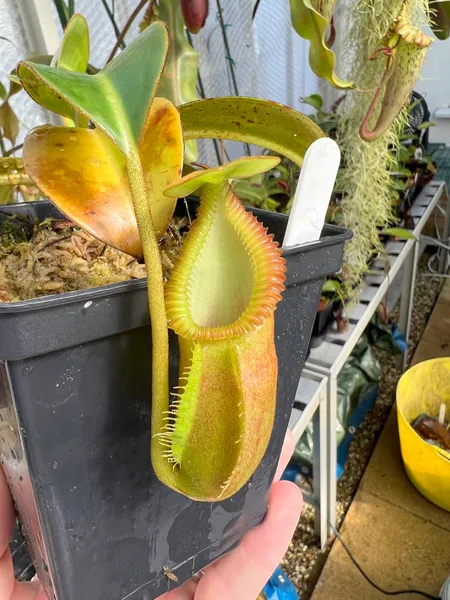 Yellow pitcher, before it colours up.
Yellow pitcher, before it colours up. Description & Care
Nepenthes macrophylla is a truly spectacular and very rare highland species from Borneo. It’s endemic to the summit of a single mountain, Gunung Trusmadi, and is critically endangered in the wild. Poaching and habitat destruction have already depleted populations of N. macrophylla to the point where it’s regarded as one of the most threatened highland Nepenthes in Borneo.
While known to botanists for a long time before it was formally described, N. macrophylla was not originally considered a distinct species. In the 1970s it was thought to be a form of N. villosa, a toothy relative from Mount Kinabalu, while in the 1980s it was generally considered a subspecies of N. edwardsiana. Only in 1997 was it classified as a species in its own right.
The species is named for its enormous leaves (macro-phylla meaning large-leaved). It’s also notable for its tough woody pitchers and their vicious toothy peristomes. The photos of wild plants above, taken by James Klech and François Mey, show the remarkable sizes that this species can attain over many decades. In the wild, Nepenthes macrophylla is known to form a natural hybrid with Nepenthes lowii known as Nepenthes × trusmadiensis. Each of these species - N. lowii and N. macrophylla - have developed a mutualistic relationship with treeshrews, similar to N. rajah. The reflexed lids produce a sugary exudate for the shrews, whose droppings fall into the pitchers.
I grow three different individuals of this species. First is a plant from Wistuba that I believe is his so-called Clone T. Second is a plant from Borneo Exotics, specifically their now-discontinued BE-3106 release compromising many unique clones. Finally I have a seed-grown plant, and this is probably my most vigorous N. macrophylla. That said, none are fast growers! This is a slow but rewarding species that needs highland conditions to thrive. If you can source it legally / ethically, I’d highly recommend this magnificent plant for any highland Nepenthes collection.
How I Grow It
| Media | Long fibre sphagnum moss, perlite, and - optionally - orchid bark (2:1:1). |
| Water | Damp but not wet. |
| Light | Very bright, diffused light. |
| Fertiliser | Maxsea or liquid orchid feed in the pitchers, every two weeks. |
| Temperatures | 12°C (54°F) minimum year-round, with summer highs of ~ 30°C (86°F). |
| Humidity | 70% during the day, rising to over 90% at night. |
Learn more about cultivation with my guide to growing Nepenthes.
Day & Night Temperatures
Nepenthes macrophylla is a highland species, found at elevations of between 2200 and 2642 meters. This range is highlighted in orange above, and equates to temperatures of approximately 19 - 24°C during the day, and 9 - 14°C at night.
Habitat
| Native to | Borneo |
| IUCN Red List status | Critically Endangered |
| Natural hybrids | N. lowii |
Buying N. macrophylla
| Availability | Hard to find. Extremely slow-growing and critically endangered in the wild. |
| Borneo Exotics codes |
|
| Recommended nursery | California Carnivores Hampshire Carnivorous Plants |
